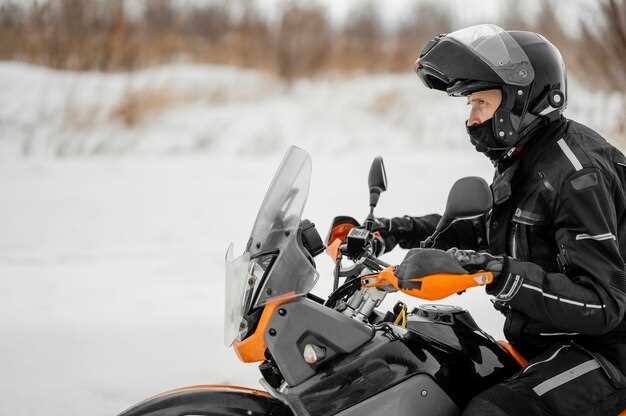

For touring motorcyclists, navigation is more than just a map; it’s a lifeline that enhances the journey and ensures a smooth ride across diverse terrains. With the open road ahead and miles of scenic landscapes to explore, having a reliable GPS system becomes an essential part of every rider’s gear. The right GPS unit can mean the difference between a leisurely adventure and a frustrating detour.
Modern GPS systems are equipped with features tailored specifically for motorcyclists, offering weatherproof designs, easy-to-read displays, and intuitive interfaces. These devices provide not only turn-by-turn directions, but also highlight points of interest, suggest scenic routes, and offer navigational features that can adapt to riding conditions. Understanding these features can help riders choose a system that enhances their touring experience.
In this article, we will explore the top GPS systems available for touring motorcyclists, examining their functionalities, pros and cons, and the unique features that set them apart. From robust mapping capabilities to integrated communication systems, these GPS devices are designed to meet the needs of both casual riders and serious adventurers on two wheels.
Top Features to Look for in Motorcycle GPS Devices

When choosing a motorcycle GPS device, several key features will enhance your touring experience and ensure that you navigate with confidence. Here are the most important ones to consider:
Weather Resistance: Motorcycle GPS devices should be built to withstand harsh weather conditions. Look for units that are rated as waterproof or at least have an IP67 rating, which ensures durability in rain and exposure to various elements.
Touchscreen Display: A high-quality, sunlight-readable touchscreen is crucial for visibility during day rides. Opt for a device that offers a responsive and easy-to-read display, even under direct sunlight or glare.
Route Customization: The ability to plan and customize routes can significantly enhance your journey. Look for GPS devices that allow you to create or modify routes based on your preferences for scenic roads, twisty paths, or specific waypoints.
Smartphone Connectivity: Integration with your smartphone provides added functionality, such as receiving notifications for calls and messages directly on the GPS screen. This feature helps you stay connected while keeping your focus on the road.
Voice Navigation: Turn-by-turn voice instructions enable a hands-free experience, allowing you to concentrate on riding without needing to frequently check the screen. Choose a GPS that offers clear audio cues and adjustable volume levels.
Built-In Maps and Updates: Ensure the GPS device comes with preloaded maps and offers free lifetime map updates. This feature will help you stay current with road changes and new routes without incurring additional costs.
Landmark Recognition: Devices with landmark recognition enhance the navigation experience by highlighting points of interest, services, and attractions along your route. This feature is especially useful for discovering new places while touring.
Ease of Mounting: A reliable and secure mounting system is essential for safe riding. Look for GPS devices that offer various mounting options compatible with your motorcycle type, ensuring stability and easy accessibility.
Battery Life: A long battery life or the possibility of charging while in use is crucial for extended rides. Choose a GPS that can last throughout your journey without frequent recharging interruptions.
By focusing on these top features, you can select a motorcycle GPS device that not only meets your navigation needs but also enhances your overall touring experience.
Comparing User Reviews: Practical Insights on Popular Models

User reviews provide valuable insights when it comes to choosing the best GPS systems for touring motorcyclists. Models like the Garmin Zumo XT, TomTom Rider 550, and the BMW Navigator VI frequently appear in consumer discussions due to their features and reliability.
The Garmin Zumo XT is often praised for its user-friendly interface and vivid display. Riders highlight the device’s robust navigation capabilities, particularly its ability to reroute in real-time, which is crucial when exploring unfamiliar territories. However, some users report concerns about battery life during longer trips, suggesting the need for a power source connection on extended journeys.
In contrast, the TomTom Rider 550 receives high marks for its lifetime map updates and excellent route customization features. Enthusiasts appreciate the Rider 550’s ability to create scenic routes based on user preferences. Nevertheless, some riders have mentioned occasional software glitches and connectivity issues with the companion app, which can be inconvenient when trying to access shared routes on the go.
The BMW Navigator VI appeals to riders who prefer seamless integration with their motorcycle. Users rave about the compatibility with BMW motorbikes, enhanced by features like automated updates through the bike’s onboard systems. However, the higher price point often leads potential buyers to question if the added features justify the investment, particularly for non-BMW motorcycle owners.
In summary, while each GPS model has its strengths and weaknesses, user reviews highlight the importance of personal needs. Factors such as user interface preferences, battery life, route customization, and device compatibility should play a pivotal role in the decision-making process for touring motorcyclists.
Installation and Integration Tips for Motorcycle GPS Systems
Installing a GPS system on your motorcycle involves careful planning and consideration of both functionality and safety. Begin by choosing a mounting location that ensures visibility while not obstructing your view of the road. Common places include the handlebars or the tank. Using a dedicated motorcycle mount specifically designed for your GPS model is crucial, as it enhances stability and reduces vibrations.
Next, secure all wiring correctly to prevent any interference with the motorcycle’s operation. Tuck wires away from moving parts and sharp edges, ensuring they do not snag or become damaged during rides. Utilize zip ties or adhesive clips to keep wiring organized and out of the way.
Powering your GPS is essential for uninterrupted navigation. Many motorcyclists opt to hardwire the GPS directly to the motorcycle’s electrical system, ensuring it receives continuous power. If you choose this route, consult the motorcycle’s manual for the correct wiring instructions or seek professional assistance to avoid electrical issues.
Integrating the GPS with other devices, such as Bluetooth headsets or smartphones, can significantly enhance your touring experience. Make sure your GPS unit supports Bluetooth connectivity and follow the manufacturer’s instructions for pairing devices. This allows for voice navigation prompts, enabling hands-free operation while riding.
Regularly update your GPS maps and software to keep your system functioning optimally. Check for updates before embarking on long trips, as fresh maps can provide better routes and information on recent road changes.
Finally, consider waterproofing your GPS unit if it isn’t already rated for adverse weather conditions. Many motorcycle-specific GPS models are designed to withstand the elements, but additional waterproof cases or covers can provide extra protection during heavy rain or harsh weather. Proper installation and integration of your motorcycle GPS can significantly enhance your touring experience, ensuring you stay on track and focused on the ride ahead.





